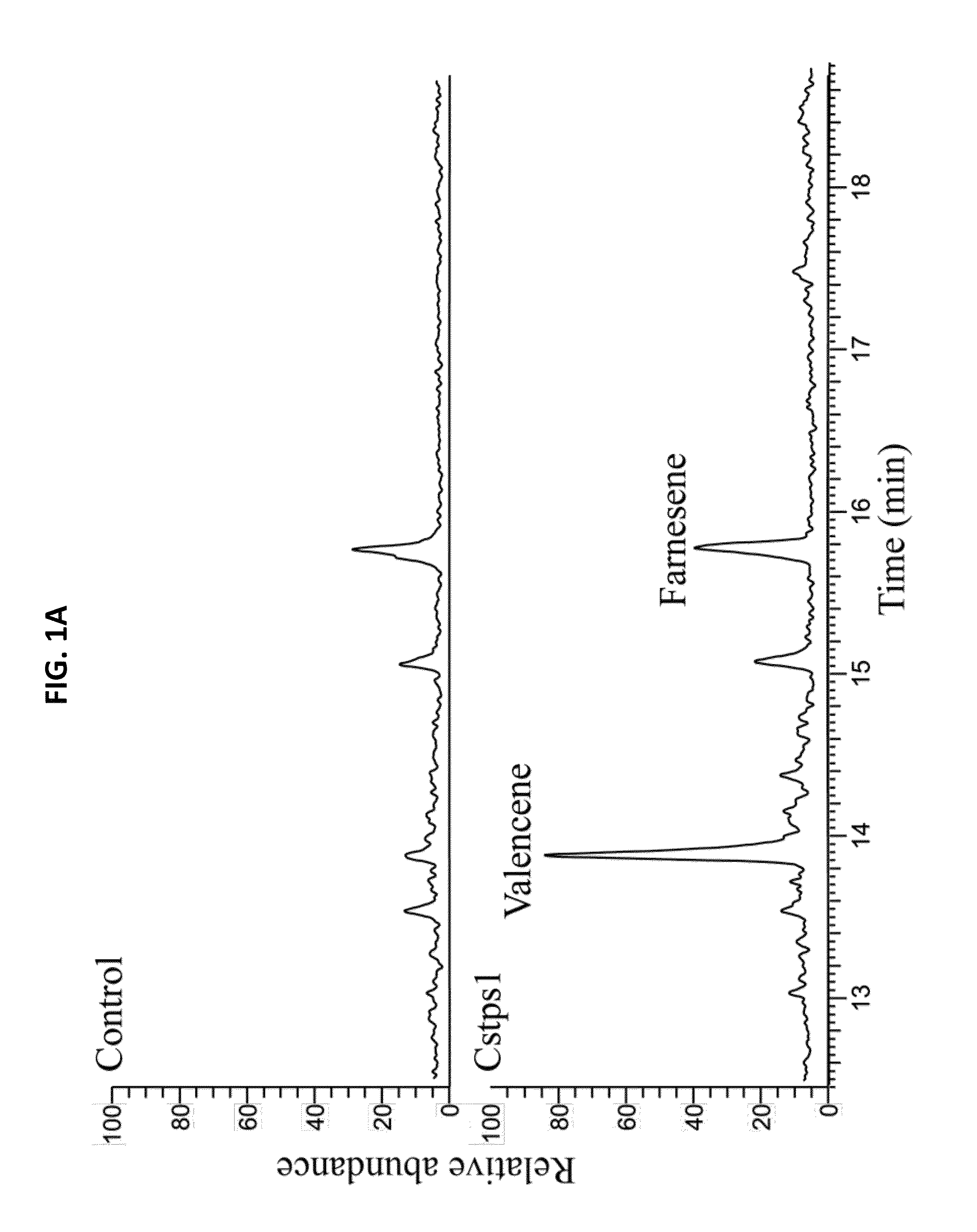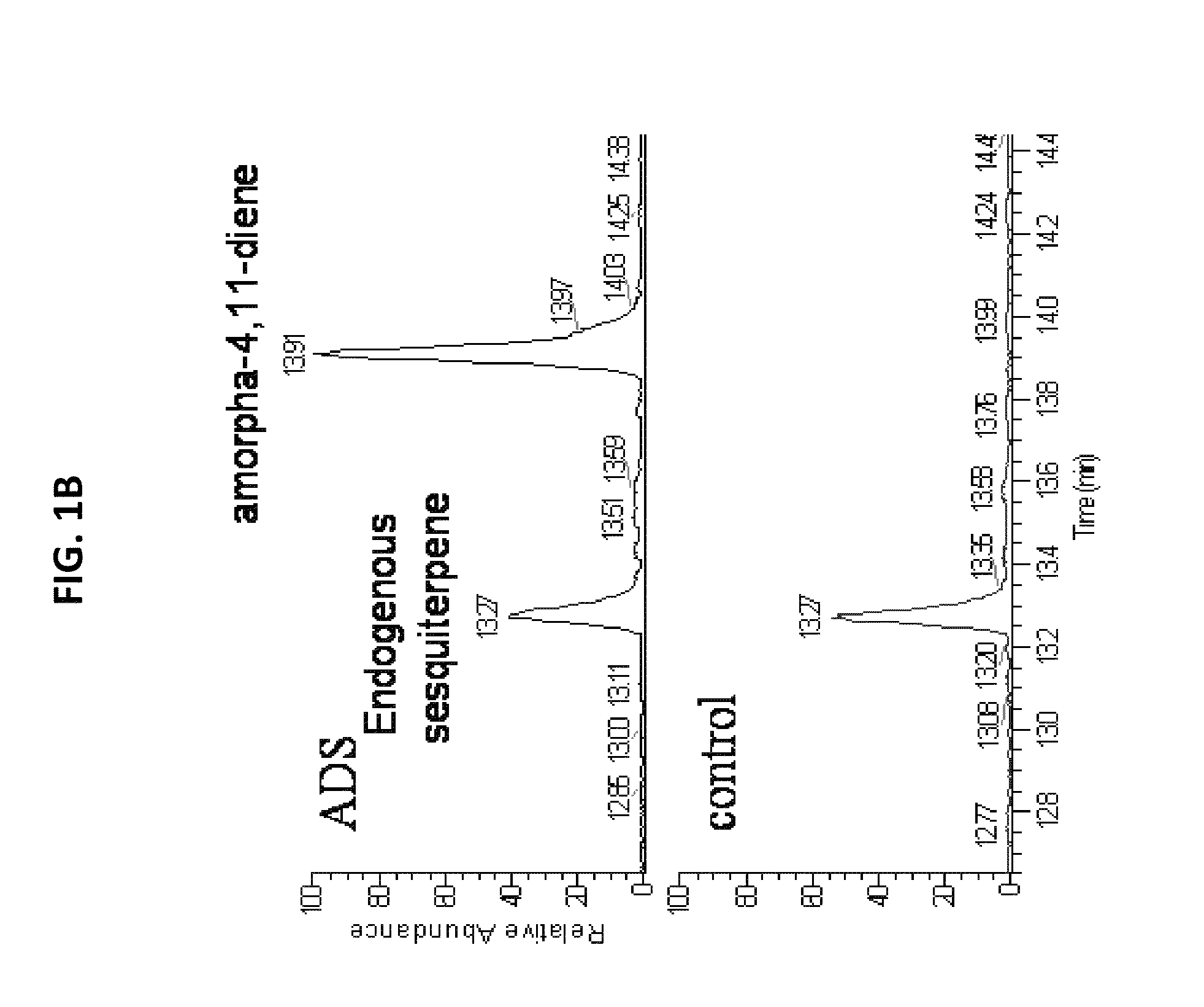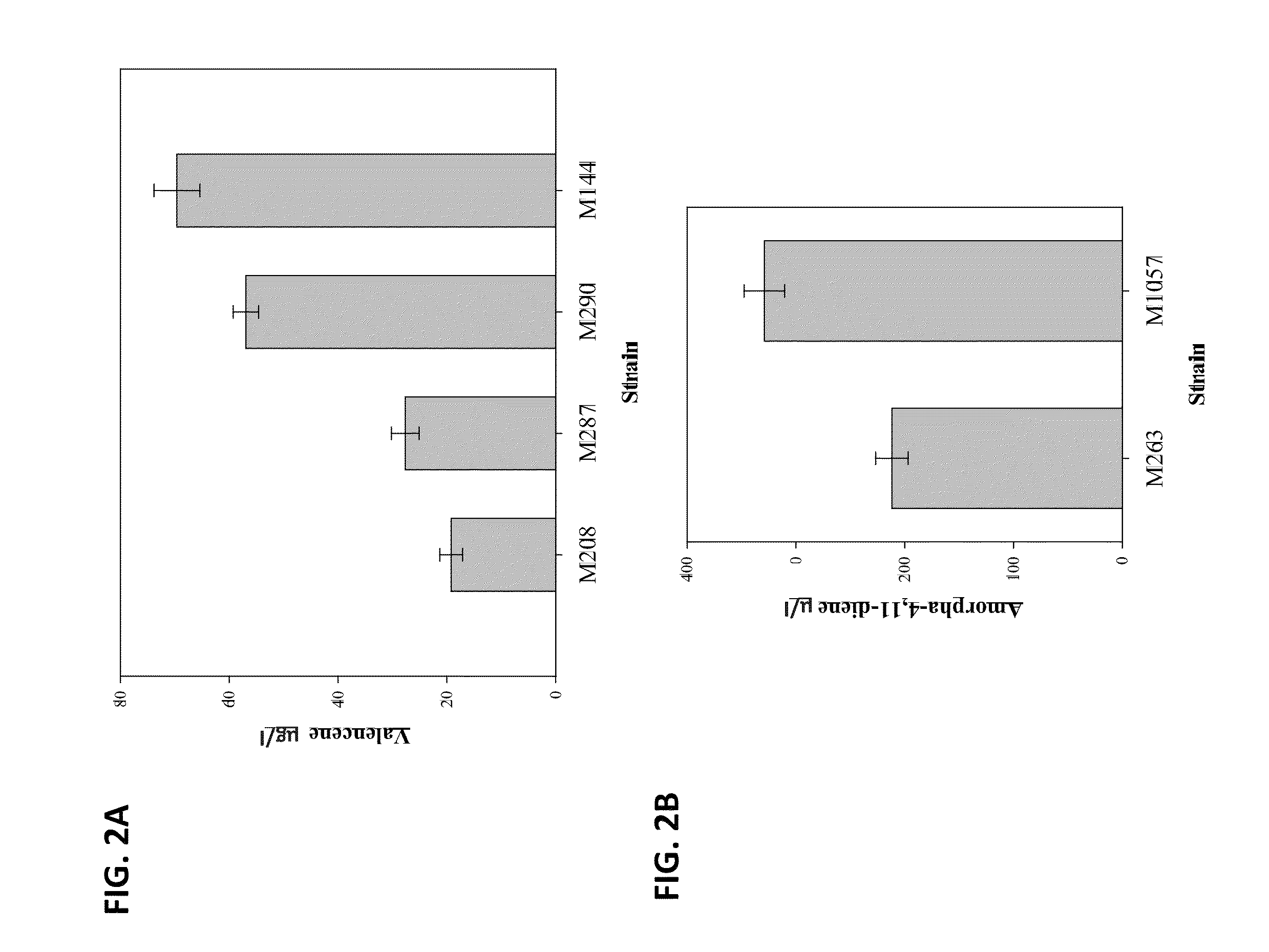Expression constructs and uses thereof in the production of terpenoids in yeast
a technology of expression constructs and terpenoids, applied in the field of expression constructs, can solve the problems of low level of interest compounds and the inability to allow commercial exploitation
- Summary
- Abstract
- Description
- Claims
- Application Information
AI Technical Summary
Benefits of technology
Problems solved by technology
Method used
Image
Examples
example 1
Production of Valencene and Amorpha-4,11-Diene in Yeast
[0232]Valencene synthase (Cstps1) and amorpha-4,11-diene synthase (ADS) were cloned into pMY5 episomal vector or pδE vector for genomic expression downstream to the copper inducible CUP1 promoter. The vectors were transformed into the W3031A yeast strain and sesquiterpenes' productions were evaluated by GC-MS analysis. Upon induction of TPSs expression, from either vector, valencene and amorphadiene were readily identified in the dodecane extracts of yeast cultures expressing Cstps1 (FIG. 1A) or ADS (FIG. 1B), respectively, and not in a control lines (FIGS. 1A-B). The identity of the terpenoids was verified by comparisons of retention time (RT) and MS to those of NIST library and to authentic standard (for valencene) or to amorpha-4,11-diene from a hexanolic extract of A. annua leaf tissues. Similar results were obtained when BDXe strain was used (FIGS. 3B and 2B), albeit higher titers of the terpenoids were obtained (compare M2...
example 2
Metabolic Engineering the Mevalonic Acid Pathway Enhanced Plant Valencene and Amorpha-4,11-Diene Production in Yeast
[0233]To facilitate high production levels of plant terpenoids, produced by yeast expressing ADS or Cstps1, the flux in the native yeast MVA pathway was elevated. HMG-R is the main rate-limiting step in this pathway and its activity is regulated by feedback inhibition [Gardner R. G. and Hampton R. Y., J. Biol. Chem. (1999) 274: 31671-31678]. Therefore, a mutated HMG-R enzyme was generated to overcome the negative regulation [Donald K. A. et al., Appl. Environ. Microbiol. (1997) 63: 3341-3344], and expressed it, using the integration plasmid pδ-tHMG, in yeast under the control of a strong promoter. Upon co-expression of tHMG and Cstps1 in the same W3031A yeast background, as compared to Cstps1 alone, up to 1.5-fold higher levels of valencene were produced as determined by GC-MS analysis (FIG. 2A). An even stronger effect on valencene production was observed when another...
example 3
Targeting Plant Terpene Synthases to the Yeast Mitochondria Highly Elevated Terpenoids Production
[0234]The present inventors speculated that a viable farnesyl diphosphate (FDP) pool is present in the yeast mitochondria, as at least three enzymes that utilize FDP are present in this organelle, namely COX10, COQ1 and BTS1 responsible for the synthesis of the isoprenoid chain of Heme A, ubiquinone and GGDP, respectively (FIG. 19). To test whether this pool can be harnessed for the synthesis of heterologous terpenoids by TPSs, the bona fide mitochondrial targeting signal peptide from the yeast COX4 gene (SEQ ID NO: 45) was fused to Cstps1 and to ADS (generating mtCstps1 and mtADS). The new constructs were inserted into pMY5 or pδE yeast expression vectors and transformed into yeast. GC-MS analysis of terpenoids produced by strain M201, carrying pMY5-mtCstps1 in the W3031A background engineered with tHMG and FDPS, revealed a 5-fold increase in valencene levels as compared to strain M135 ...
PUM
| Property | Measurement | Unit |
|---|---|---|
| volume | aaaaa | aaaaa |
| volume | aaaaa | aaaaa |
| temperature | aaaaa | aaaaa |
Abstract
Description
Claims
Application Information
 Login to View More
Login to View More - R&D
- Intellectual Property
- Life Sciences
- Materials
- Tech Scout
- Unparalleled Data Quality
- Higher Quality Content
- 60% Fewer Hallucinations
Browse by: Latest US Patents, China's latest patents, Technical Efficacy Thesaurus, Application Domain, Technology Topic, Popular Technical Reports.
© 2025 PatSnap. All rights reserved.Legal|Privacy policy|Modern Slavery Act Transparency Statement|Sitemap|About US| Contact US: help@patsnap.com



